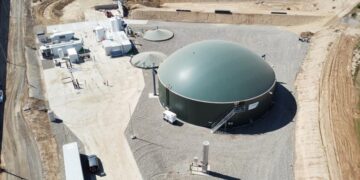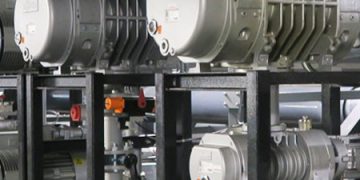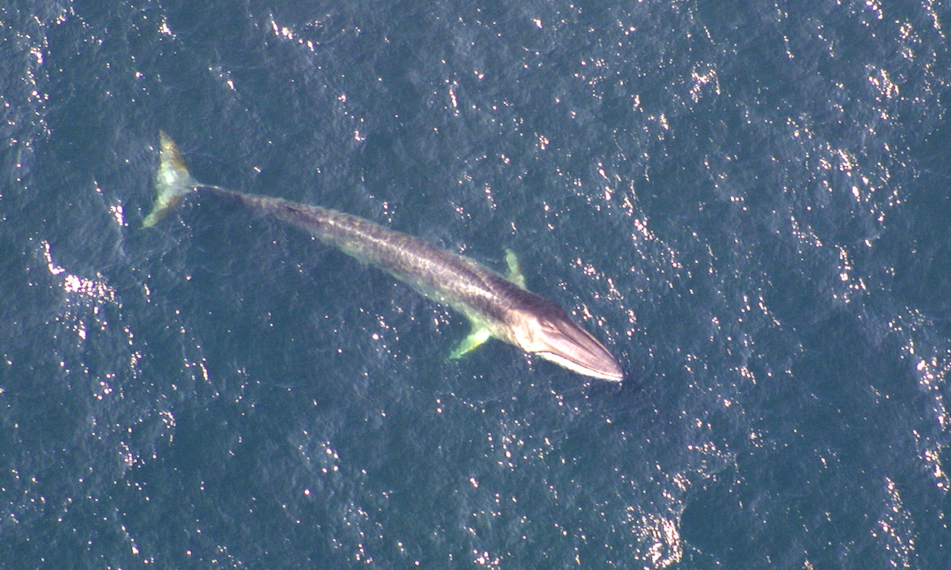Fin whales are the second largest creatures on our planet, surpassed only by blue whales. They can reach a length of around 20 meters — and require up to two tons of food per day. Accordingly, they release enormous amounts of nutrients — with significant effects on ocean ecosystems. Industrial whaling, however, has significantly reduced their numbers. It was aimed at the tran of whales as raw material and was particularly intensive between 1880 and an international agreement in 1986. Today, the number of fin whales worldwide is estimated at about 100,000 animals; the species is considered endangered according to the Red List. A new study by scientists from the LOEWE Center for Translational Biodiversity Genomics (TBG), the Senckenberg Biodiversity and Climate Research Center (SBiK‑F), and Icelandic and Swedish research institutions shows the consequences of their decimation for the populations and especially for the genomic diversity of fin whales. Fortunately, their results show no long-term genetic weakening of this species.
After fin whales were hunted in the early 20th century until local whaling industries collapsed in some places due to declining catches — such as in the waters around Norwegian Finnmark in 1904 — there were fears of glaring consequences, including extinction of the species due to inbreeding. For the study published in the journal “Molecular Biology and Evolution”, the scientists now examined 51 genomes of a North Atlantic fin whale population from Icelandic waters for the first time. Using the samples from 1989, 2009 and 2018, they developed demographic models that allow conclusions to be drawn about population changes over around 800 years. The analyses focused on whether whaling also affected the genetic diversity of fin whales.
The team concludes that whaling had a strong impact on populations in the North Atlantic, decimating them to as much as twenty percent of their previous size within about one hundred years. However, the team also showed that different populations were hit differently by whaling, as the genomes of some animals showed little or no trace of this population reduction.
“Looking at the genetic diversity of a species allows us to draw conclusions about whether and how well that species can adapt to new environmental conditions or changes in its population, or whether it is likely to go extinct. Therefore, genomic analysis can often reveal trends before they become overt. However, in the case of North Atlantic fin whales, we did not detect a significant loss of their diversity in the long-term perspective.”
- Magnus Wolf, lead author of the study
Other genetic consequences within the depleted fin whale stocks also appear to have failed to materialize. Neither did the scientists* find evidence of frequent inbreeding, where genomes become unnaturally similar, nor could a greater number of genetic defects be detected that would burden the population in the long term. “Such mutations occur all the time, but they are more noticeable in small populations because sometimes there are then no animals without the mutation left to prevail,” Wolf said.
So, compared to more endangered cetacean species such as the blue whale or North Atlantic right whale, current human impacts seem to be the main obstacle to fin whale recovery. These include increasing shipping traffic and pollution of the seas. The International Union for Conservation of Nature (IUCN) has classified fin whales as an endangered species on its Red List. Therefore, there is currently no all-clear for their situation, emphasizes Prof. Dr. Axel Janke, lead scientist of the study, scientific coordinator and spokesperson of the LOEWE Center TBG and also working at SBiK‑F and the Institute for Ecology, Evolution and Diversity at Goethe University Frankfurt.
“It is fascinating how genomic insights can contribute to our picture of whale conservation. Genomics is emerging as a key technology not only for species conservation, but also helps us understand what biodiversity actually is and how we can use it. Whales are not only impressive animals, but despite their long lifespan of up to one hundred years and their body size, they also seem to develop hardly any tumors and are thus resistant to cancer. Deciphering the genomic mechanisms that cause this paradox could help us address one of the most consequential diseases in human history.”

















